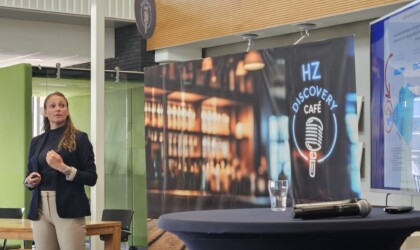Deltas in particular are susceptible to phenomena such as climate change, sea level rise and natural disasters. Therefore, coastal defense is important in these areas. Experience has shown that natural solutions are more resilient to resist disturbances. The lectorate Building with Nature investigates how to make maximum use of nature in coastal defense, so that in addition to safety it also offers opportunities for recreation.
Much of the Netherlands has a sandy coast of beaches and dunes. Such a coast can be maintained by the interplay of sand, wind, waves and currents. An example of a Building with Nature approach is to replenish the shortage of sand after which it is left to nature to maintain the coast. An added benefit is being able to recreate on the beach.
Restoration of salt marshes
In addition to sandy coasts, the Netherlands has dikes. Examples of Building with Nature solutions in such areas are artificial oyster reefs or the restoration of salt marshes that reduce wave impact on the dike.
The research group also conducts research into increasing natural values on the dikes themselves. The researchers work a lot on site, in the field or in the laboratory.
Wietse van de Lageweg is lector Building with Nature. He delivered his inaugural address on Nov. 3, 2022: 'Future Shores'.
Projects
Underwater Laboratory
Behind the research facility of NIOZ in Yerseke lie 12 concrete basins that are flooded during…
C-SCAPE
Sand suppletions are one of the most important and most used techniques against…






